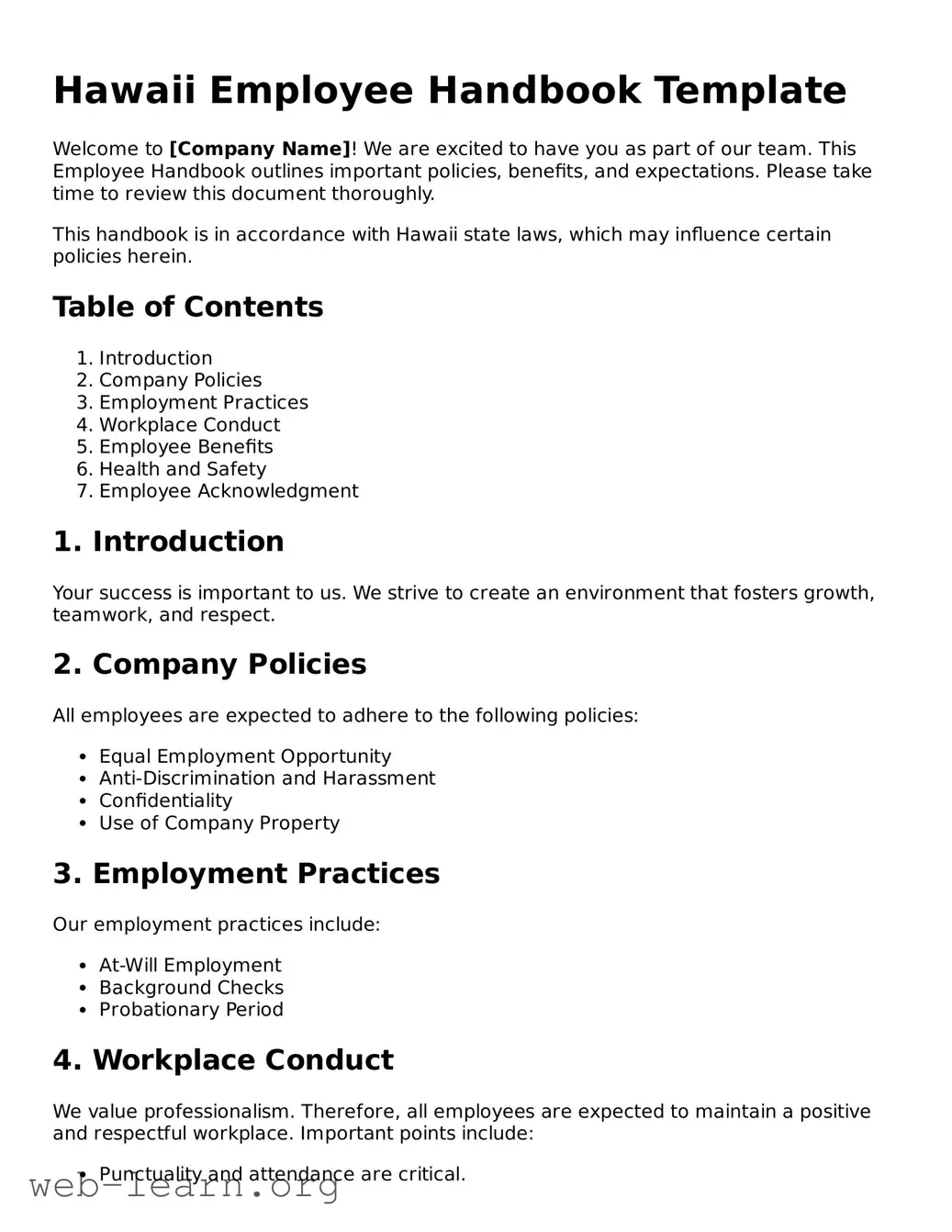Hawaii Employee Handbook Template
Welcome to [Company Name]! We are excited to have you as part of our team. This Employee Handbook outlines important policies, benefits, and expectations. Please take time to review this document thoroughly.
This handbook is in accordance with Hawaii state laws, which may influence certain policies herein.
Table of Contents
- Introduction
- Company Policies
- Employment Practices
- Workplace Conduct
- Employee Benefits
- Health and Safety
- Employee Acknowledgment
1. Introduction
Your success is important to us. We strive to create an environment that fosters growth, teamwork, and respect.
2. Company Policies
All employees are expected to adhere to the following policies:
- Equal Employment Opportunity
- Anti-Discrimination and Harassment
- Confidentiality
- Use of Company Property
3. Employment Practices
Our employment practices include:
- At-Will Employment
- Background Checks
- Probationary Period
4. Workplace Conduct
We value professionalism. Therefore, all employees are expected to maintain a positive and respectful workplace. Important points include:
- Punctuality and attendance are critical.
- Use of inappropriate language or behavior is not tolerated.
- Teamwork and collaboration are encouraged.
5. Employee Benefits
We offer a range of benefits, including:
- Health Insurance
- Retirement Plans
- Paid Time Off
- Flexible Work Options
6. Health and Safety
Your safety is our priority. It is essential to:
- Report any workplace hazards immediately.
- Follow safety protocols and training received.
7. Employee Acknowledgment
Please sign below to acknowledge your receipt and understanding of this Employee Handbook.
Employee Name: [Employee Name]
Signature: [Employee Signature]
Date: [Date]
Thank you for being part of [Company Name]. We are glad to have you with us!
